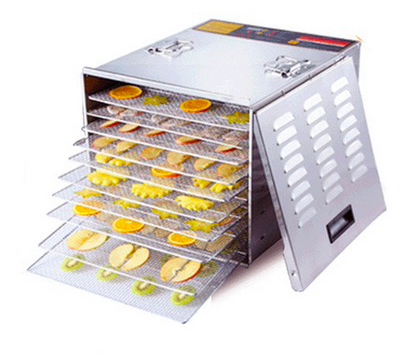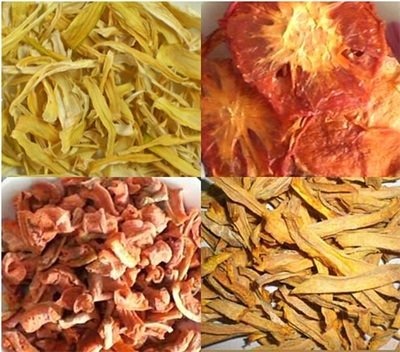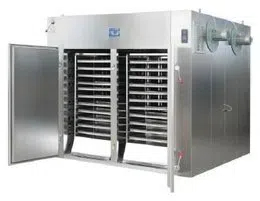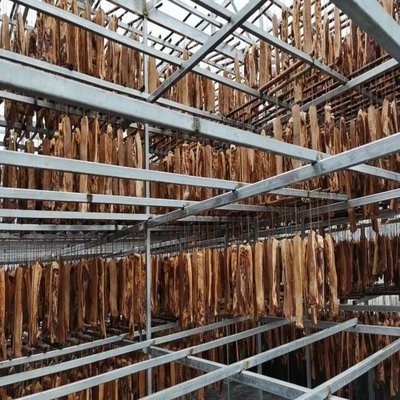
Content Menu
● Introduction
● What Are Food Dryers?
>> The Importance of Food Drying
● Types of Food Dryers
>> 1. Heat Pump Dryers
>> How Heat Pump Dryers Work
>> Advantages of Heat Pump Dryers
>> 2. Condenser Dryers
>> How Condenser Dryers Work
>> Advantages of Condenser Dryers
>> 3. Vented Dryers
>> How Vented Dryers Work
>> Advantages of Vented Dryers
● Heat Pump vs. Condenser vs. Vented Dryers
>> Energy Consumption Comparison
>> Product Quality Considerations
● Applications of Food Dryers
>> Fruit and Vegetable Processing
>> Herb Drying
>> Meat Jerky Production
>> Specialty Foods
● Choosing the Right Dryer for Your Business Needs
● Conclusion
● Frequently Asked Questions (FAQs)
>> 1. What is the most energy-efficient type of food dryer?
>> 2. Can I use a condenser dryer indoors?
>> 3. How do I maintain my food dryer?
>> 4. What foods can be dried using these machines?
>> 5. Are vented dryers suitable for all climates?
Introduction
In the food processing industry, drying is a crucial step for preserving food quality, enhancing flavor, and extending shelf life. As a manufacturer of food drying machines in China, we provide OEM services for international brands, wholesalers, and producers. This article will delve into the different types of food dryers, specifically focusing on heat pump, condenser, and vented dryers. We will explore their mechanisms, advantages, and applications to help you make an informed decision for your business.

What Are Food Dryers?
Food dryers are machines designed to remove moisture from food products to inhibit the growth of bacteria, yeasts, and molds. They work by circulating warm air around the food items, effectively evaporating moisture. The choice of dryer can significantly impact the drying efficiency, energy consumption, and final product quality.
The Importance of Food Drying
Food drying is not just about removing moisture; it also plays a vital role in enhancing flavors and preserving nutritional content. Dried foods can be stored for longer periods without refrigeration, making them ideal for both consumers and businesses. Additionally, dried foods are lightweight and easy to transport, which is particularly beneficial for distributors and retailers.
Types of Food Dryers
1. Heat Pump Dryers
Heat pump dryers utilize a refrigeration cycle to extract moisture from food products. They are known for their energy efficiency and ability to operate at lower temperatures compared to traditional drying methods.
How Heat Pump Dryers Work
Heat pump dryers function by transferring heat from the environment to the drying chamber. The process involves:
- Evaporation: The heat pump extracts moisture from the food.
- Condensation: The moisture is then condensed and removed from the system.
This method allows for precise control over temperature and humidity levels, making it ideal for delicate foods such as fruits and vegetables.
Advantages of Heat Pump Dryers
- Energy Efficiency: They consume less energy compared to conventional dryers.
- Low Operating Temperatures: Suitable for heat-sensitive products.
- Versatility: Can be used for various food types.
- Environmental Impact: Reduced energy consumption leads to lower carbon emissions.
- Quality Preservation: Maintains the color, flavor, and nutrients of food better than higher-temperature methods.
2. Condenser Dryers
Condenser dryers operate by condensing moisture from the air inside the dryer. They use a heat exchanger to cool down the air, causing moisture to condense into water that can be drained away.
How Condenser Dryers Work
The process includes:
- Air Circulation: Warm air circulates around the food.
- Cooling: The air is cooled in a heat exchanger.
- Condensation: Moisture condenses and is collected in a reservoir or drained away.
This method is effective for a wide range of products and does not require external ventilation.
Advantages of Condenser Dryers
- No Need for External Ventilation: Ideal for indoor use.
- Ease of Use: Simple setup and operation.
- Consistent Performance: Maintains consistent drying conditions.
- Space Efficiency: Compact design allows for installation in smaller spaces.
- Lower Maintenance Requirements: Generally easier to maintain than vented systems.
3. Vented Dryers
Vented dryers expel hot air outside the dryer unit after it has passed over the food items. This method is commonly used in traditional drying processes.
How Vented Dryers Work
The operation involves:
- Hot Air Generation: A heating element warms the air.
- Air Circulation: Warm air is blown over the food items.
- Exhaust: Moist air is vented outside.
This method is straightforward but may not be suitable for all environments due to its reliance on external conditions.

Advantages of Vented Dryers
- Fast Drying Times: Efficient moisture removal.
- Lower Initial Costs: Generally less expensive than heat pump or condenser options.
- Simplicity: Straightforward design and operation.
- High Capacity: Often capable of handling larger batches at once.
Heat Pump vs. Condenser vs. Vented Dryers
When choosing between these three types of dryers for food processing, consider the following factors:
| Feature | Heat Pump Dryer | Condenser Dryer | Vented Dryer |
|---------------------------|--------------------------|--------------------------|--------------------------|
| Energy Efficiency | High | Moderate | Low |
| Operating Temperature | Low | Moderate | High |
| Moisture Removal | Effective | Effective | Very Effective |
| Initial Cost | Higher | Moderate | Lower |
| Maintenance | Moderate | Low | Low |
Energy Consumption Comparison
Energy efficiency is a critical consideration when selecting a dryer. Heat pump dryers typically consume significantly less energy than vented dryers due to their ability to recycle heat within the system. This makes them an excellent choice for businesses looking to reduce operational costs while maintaining high-quality output.
Product Quality Considerations
The final quality of dried products can vary significantly based on the type of dryer used:
- Heat Pump Dryers often produce superior quality dried foods with vibrant colors and retained nutrients due to lower drying temperatures.
- Condenser Dryers, while effective, may not preserve color as well as heat pump dryers but still offer good results with consistent performance.
- Vented Dryers, although fast, can lead to over-drying or uneven results if not carefully monitored due to higher temperatures.
Applications of Food Dryers
Food dryers are versatile machines used across various industries:
Fruit and Vegetable Processing
Dried fruits and vegetables retain flavor and nutrients while providing a longer shelf life. They are popular in snacks, cereals, and health foods.
Herb Drying
Preserving herbs through drying maintains their essential oils and flavors, making them ideal for culinary uses in restaurants and households alike.
Meat Jerky Production
Creating jerky with controlled moisture levels ensures safety while maximizing flavor retention. This process has gained popularity among health-conscious consumers seeking high-protein snacks.
Specialty Foods
Certain specialty foods like mushrooms or fish also benefit from drying processes that enhance their flavors while extending shelf life.
Choosing the Right Dryer for Your Business Needs
Selecting the appropriate dryer depends on several factors including:
- Type of Food Products: Different foods require different drying methods based on their moisture content and sensitivity to heat.
- Production Volume: Consideration must be given to how much product needs to be dried within a specific timeframe.
- Budget Constraints: Initial investment versus long-term operational costs should be analyzed carefully.
Conclusion
Choosing the right type of food dryer is essential for optimizing production processes and ensuring high-quality products. Heat pump dryers offer energy efficiency and versatility; condenser dryers provide ease of use without requiring external ventilation; while vented dryers are known for their speed but may lack energy efficiency. Understanding these differences will help you select the best machine for your specific needs in food processing.
By investing in an appropriate drying solution tailored to your product line and operational goals, you can enhance your business's productivity while ensuring customer satisfaction with high-quality dried foods.

Frequently Asked Questions (FAQs)
1. What is the most energy-efficient type of food dryer?
Heat pump dryers are generally considered the most energy-efficient option due to their ability to operate at lower temperatures while effectively removing moisture.
2. Can I use a condenser dryer indoors?
Yes, condenser dryers do not require external ventilation, making them suitable for indoor use in various settings.
3. How do I maintain my food dryer?
Regular cleaning of filters and checking for any blockages in vents or drainage systems will help maintain optimal performance across all types of dryers.
4. What foods can be dried using these machines?
Most fruits, vegetables, herbs, meats, and even some dairy products can be dried using heat pump, condenser, or vented dryers.
5. Are vented dryers suitable for all climates?
Vented dryers may not be ideal in humid climates as they expel moist air outside; this can lead to inefficient drying if external conditions are not favorable.
By understanding these key differences and applications of heat pump vs. condenser vs. vented dryers, you can make an informed decision that best suits your business needs in the food processing industry.












